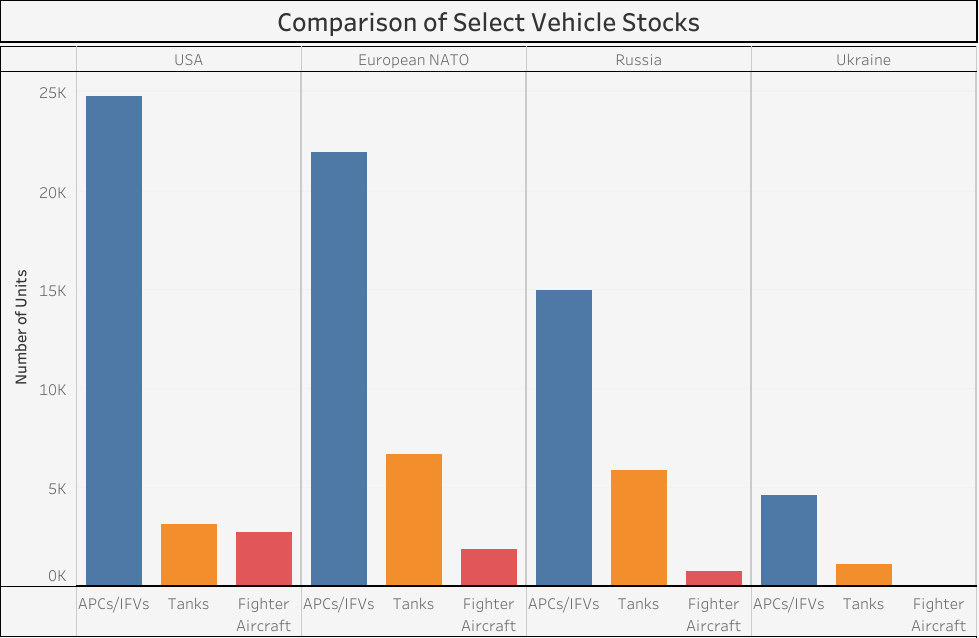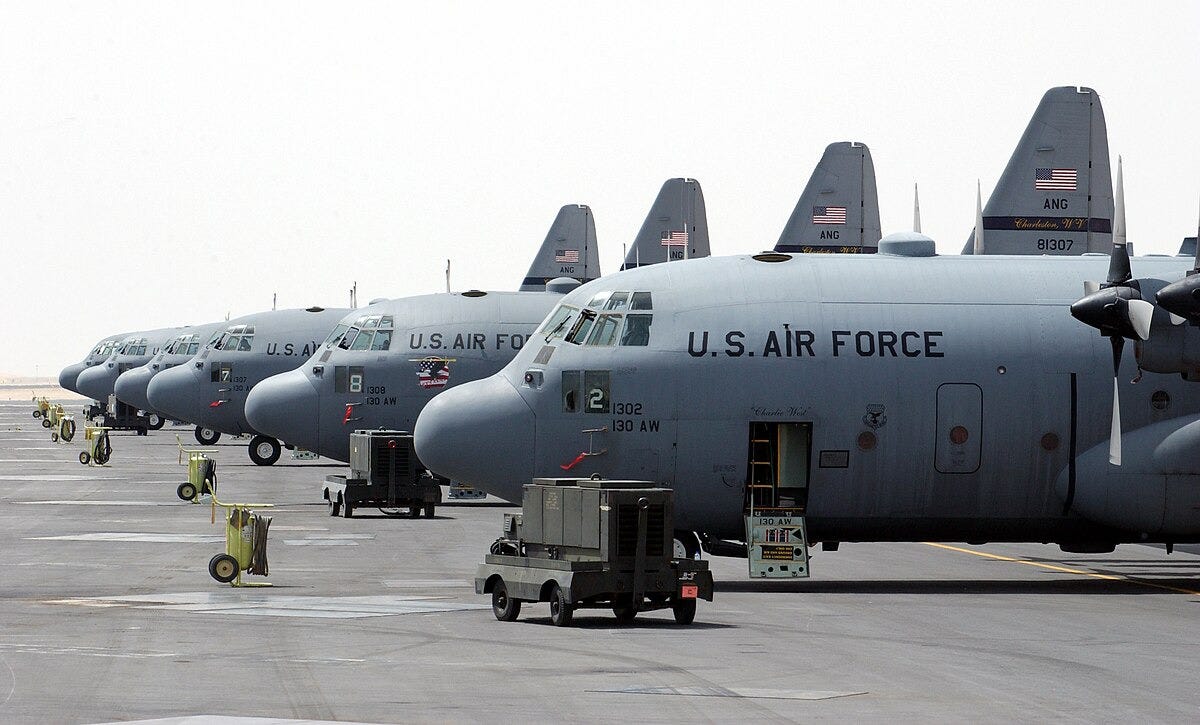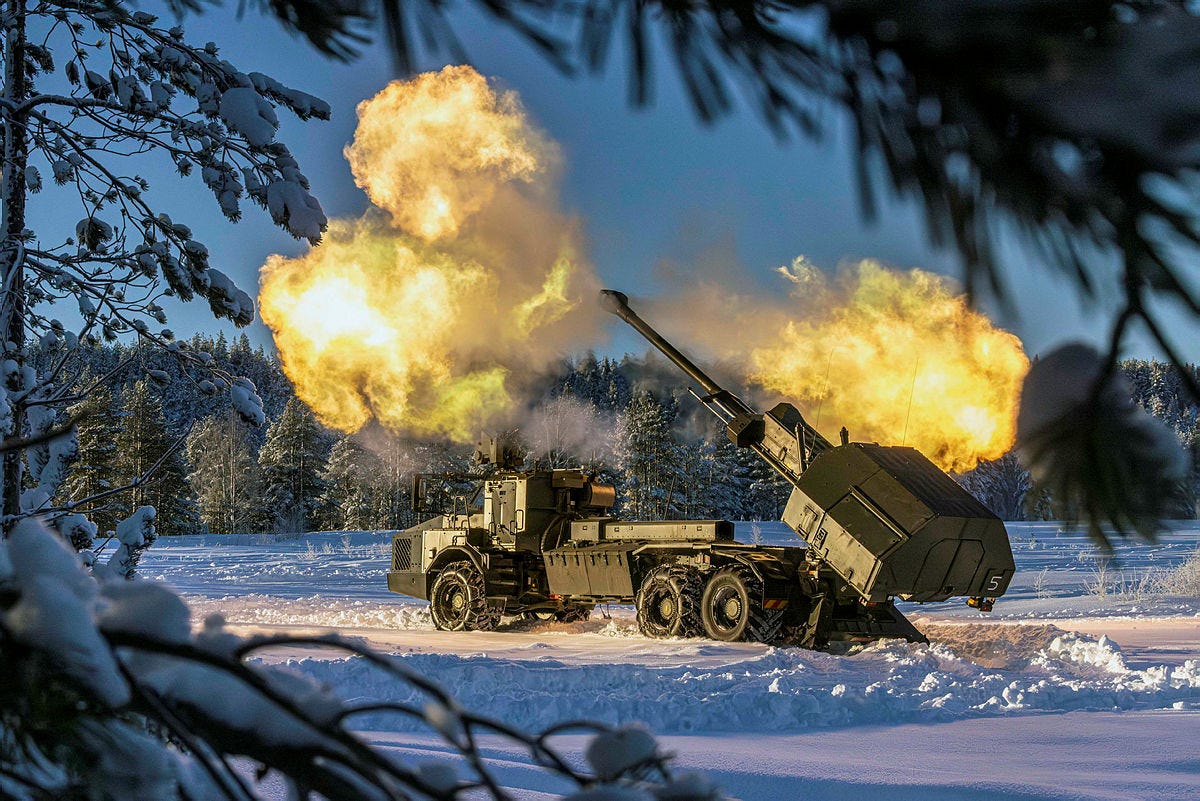Can Europe support Ukraine and defend itself against Russia without the United States?
That is the question that seems to be on everyone’s mind at the moment, thrown into sharp relief by the actions and words of the new US administration.
I should say from the start – I do not actually believe that the United States will fully withdraw from NATO, for a variety of political and strategic reasons. However, I do think that there will be a reduction in US interest and presence in the European theatre. I also happen to believe that, over the longer-term, this will occur regardless of which flavour of party currently inhabits the White House, and have done so for a while.1
Regardless, Europe faces a future in which it cannot rely on the support or guarantees of the outside power that has protected it for the better part of a century. Hence, the European members of NATO need to start considering how they will deter Russia, with or without the United States.
How Does European NATO stack up against Russia?

On the face of it, the European portion of the NATO alliance doesn’t look too shabby compared to its primary threat – Putin’s Russia (boooo).2 According to the latest IISS Military Balance figures (came out last week - perfect timing!) the European Alliance nations (i.e., excluding the US and Canada) collectively employ over 1.8m active servicepeople under arms, compared to Russia which has 1.34m, and a collective GDP which is 10 times that of the Russian Federation. The collective European defence industry is one of the largest in the world, with Germany, France, the UK, and Italy all within the top 10 arms producers. Finally, two European nations – France and the UK – are nuclear powers, though holding nowhere near the arsenals of the US or Russia.
In terms of support to Ukraine – Europe actually provides more financial aid than US does, and has provided similar (if not quite equal) levels of military aid. European nations have taken the lead on training Ukrainian recruits, with over 50,000 having graduated through the UK-led Operation Interflex, and there are several European-led initiatives to provide steady flows of ammunition to Ukraine.3
However, numbers only tell a very incomplete story. While European NATO does in many ways outnumber the Russian Federation, it is not a unified whole. It is a patchwork of nations – many quite small – with different languages, resources, priorities and ways of operating. While NATO standards provide an element of commonality and at the higher levels there are integrated multinational commands, the spread of integration is very uneven. Most NATO militaries – armies especially – are at best deconflicted with one another; able to fight alongside each other geographically, but not able to provide seamless mutual support.4
Secondarily, thanks to years of under-funding, NATO militaries are at varying stages of readiness – often, frankly, not very good. Just because, say, Bulgaria has 90 tanks does not mean that all of those tanks are in good condition, have enough ammunition or spare parts, or that the crews are well trained in armoured warfare.5
Thirdly, while at the ‘teeth’ end – e.g. the shiny sharp shooty bits of equipment – European NATO doesn’t look too bad, there is a huge swathe of stuff that Europeans lack, especially in niche capabilities and the all-important ‘tail’ – logistics, sustainment, and support.6
The Double-Edged Sword of US support
Much of the above is a result of European militaries, especially for the past few decades, designing their militaries to either plug into, or rest on a bedrock, of American military might. The US supplies much of the logistical heft, sustainment, and intelligence support on which NATO power relies.7
As an example, a critical capability for NATO – which traditionally relies heavily on airpower – is the ability to suppress or destroy enemy air defences, known as SEAD/DEAD. The US Air Force overwhelmingly provides this capability, and most European air forces completely lack the ability to do so.8 Hence, the European numerical overmatch against Russia in terms of fighter aircraft means very little if those aircraft can’t be used due to the plethora of unsuppressed Russian air defence systems.

Another is the lack of strategic airlift – i.e. moving lots of stuff via big transport planes. This is particularly important if you consider that some of the largest militaries in NATO – UK, France, Spain, etc. are not that close to the Russian border. Hence, the best way to move that military power to where it needs to be quickly is by using airlift. The United States has just shy of 800 large and medium transport aircraft; European NATO as a whole has about 250, most of those much smaller than their US counterparts.
Possibly the most important aspect to consider is the US dominance in military command structures. NATO was, and still is, structured on the basis of US hegemonic supremacy. Supreme Allied Commander – SACEUR, or the top military dog in NATO – is always an American.9 The US funds a significant portion of NATO’s organisational needs, Americans provide much of the staff in NATO headquarters, and two major NATO commands are headquartered in the United States. NATO as an organisation was designed to rely heavily on American participation; it has been a instrument of US hegemonic power over Europe for decades.10
This really matters because consequently Europeans have very little experience of conducting major operations without US involvement, especially in the last thirty years. Even the UK, which retains substantial institutional staff knowledge and experience all the way to Corps-level, has not conducted serious sustained operations without the US since the Falklands War. This sort of experience does not magically appear overnight; it takes years of serious investment, training, and resource.
This complete reliance on the Americans in higher military matters also explains why many European nations – Germany especially – seem to be completely unable to think and act strategically when it comes to national security. There has been no need for serious strategic thought because it has been outsourced to the US for decades.
So What?

So where does that leave us? On paper, Europe doesn’t look as bad as it might; however, the detail reveals gaping holes, especially conceptually. The simple answer that everyone knows is that European nations need to invest more in defence, and – importantly – invest wisely.11 Europeans also need to start taking the lead in more military operations to develop the muscle memory of how to fight at scale.
There are a few bright spots amidst the gloom. The penny has dropped in many nations. European defence investment is increasing, with countries like Poland, Romania, the Nordics, and now the Netherlands leading the way. While infamously sclerotic, European defence industrial capacity is finally ramping up – as an example, Rheinmetall has increased its production of artillery rounds by a factor of ten compared to pre-2022 (yaay!). There is also much greater willingness to cooperate and use the financial heft of the EU to both 1) support Ukraine and 2) invest in arms manufacture.
Europe is also well-placed to exploit developing technology – while obviously much smaller than the United States, the continent has a far stronger technological base than Russia does. The development of European defence start-ups like Helsing shows promise and suggest that Europe can successfully manage the transition to future warfare.
NATO has increased the scope and importance of its exercises such as Steadfast Defender, emphasising readiness and large-scale operations. The big increase in Enhanced Forward Presences, leading to continual deployments of Allied soldiers to front-line nations, will assist with better integration and understanding between Allied militaries.12
Finally – the example of Ukraine gives some cheer. Few expected a nation of 34m people, and one of the poorest countries in Europe, to hold off the Russian threat. Three years on, the Ukrainians are still fighting and have seriously blunted the bear’s claws. Ukraine has shown Europeans that with tenacity, willpower and ingenuity, the Russian threat can be held at bay.
Conclusion
Regardless of who sits in the White House, Europeans know that we cannot solely rely on the US for its defence – and nor should we. Europe should have acted decisvely a decade ago; having missed that opportunity, we need to get going now. Strong leadership and political courage are needed to support Ukraine, deter Putin and defend our people in the 21st century.
Let me know if you have any thoughts or feelings in the comments. There is a lot to say about this topic, and I’m happy to expand if people would like!
All the best,
Matthew
Some of you who follow me elsewhere may have seen my rant about the European inability to adjust to the fact that the US strategic priority is Asia, and has been for years.
For ease, when I refer to ‘Europe’, it is short-hand for European NATO, though I will also refer to the EU occasionally. I’m not going to get tangled in the weeds of talking about Austria, Switzerland, Ireland etc.
Fantastic video here on Interflex: Access All Areas.
As an example of what I mean: British and Czech battlegroups are probably able to fight next to each other with boundaries deconflicted, but they might not be able to communicate easily with one another, nor provide quick and rapid support. Their orders processes are likely different, and their only way of communicating with each other is through liaison officers or right up their individual chains to a multinational level and back down again.
This is a purely hypothetical example, I’m not picking on the Bulgarians!
It is a classic trope of defence cuts to keep as many ‘shiny’ bits of kit as possible to save political face, while decimating all the critical support elements which keep those shiny things in the fight.
Regarding intelligence – especially in terms of collection, if not analysis. The US ability to hoover up data is unmatched.
Alarmingly, this includes both the Royal Air Force and the Armée de l'Air et de l'Espace, two of the most dominant air forces in Europe.
Deputy SACEUR (DSACEUR) is almost always a British officer, interestingly.
This is one of the prime reasons I don’t think that the US will actually completely abandon NATO, because it is such an obvious win for US hegemony.
One way is to start seriously working out which nations will take the lead on certain capabilities, in order to ensure a balanced spread across the European alliance.
The ‘EFPs’ originally started in the Baltics and Poland, and have now expanded to Slovakia, Hungary, Romania, and Bulgaria. Finland will be hosting something similar as well.




Thank you very much for your interesting and knowledgeable writings.
May I respectfully make a couple of comments…
When we consider the relative GDP of European countries, I don’t think it’s particularly helpful to use constant currency comparisons as this leads us to the obvious absurdity of saying - as you do - that Europe’s GDP is 8 X larger than that of Russia. Even the CIA agrees that Russian GDP is now significantly larger than that of Japan on a PP basis, and is likely to overtake that of India if current trends can be extrapolated. For a further example of how ridiculous this is I still from time to time read ludicrous comments about how Russia has a GDP smaller than that of Spain. (As though Spain could build SSNs, or design and manufacture its own jet aircraft, or launch satellites, or design and construct nuclear power plants lol.)
In wartime - obviously - GDP based on raw material extraction and processing , and the manufacturing of war materiel counts for more than GDP based on flipping houses or burgers.
Also, it would be helpful if you could quote some data or stats to support your assertion that Russia is far behind Russia in the level of its technology. Personally I don’t believe that this is generally the case, but perhaps you could cite some evidence to support your assertion.
Thank you once again for your generosity in sharing your expertise and knowledge.
More seriously one of the reasons for the detoritation of defence capabilities was the ‘peace dividend’ that allowed the politicians to lower taxes or not increase them to pay for amongst other aging population. The voters happily accepted that. No politician even hints at that taxes / levies have to go up. Just look at the UK were HMG are running scared because they are afraid they get tarred again as tax n spend and loose the next GE.